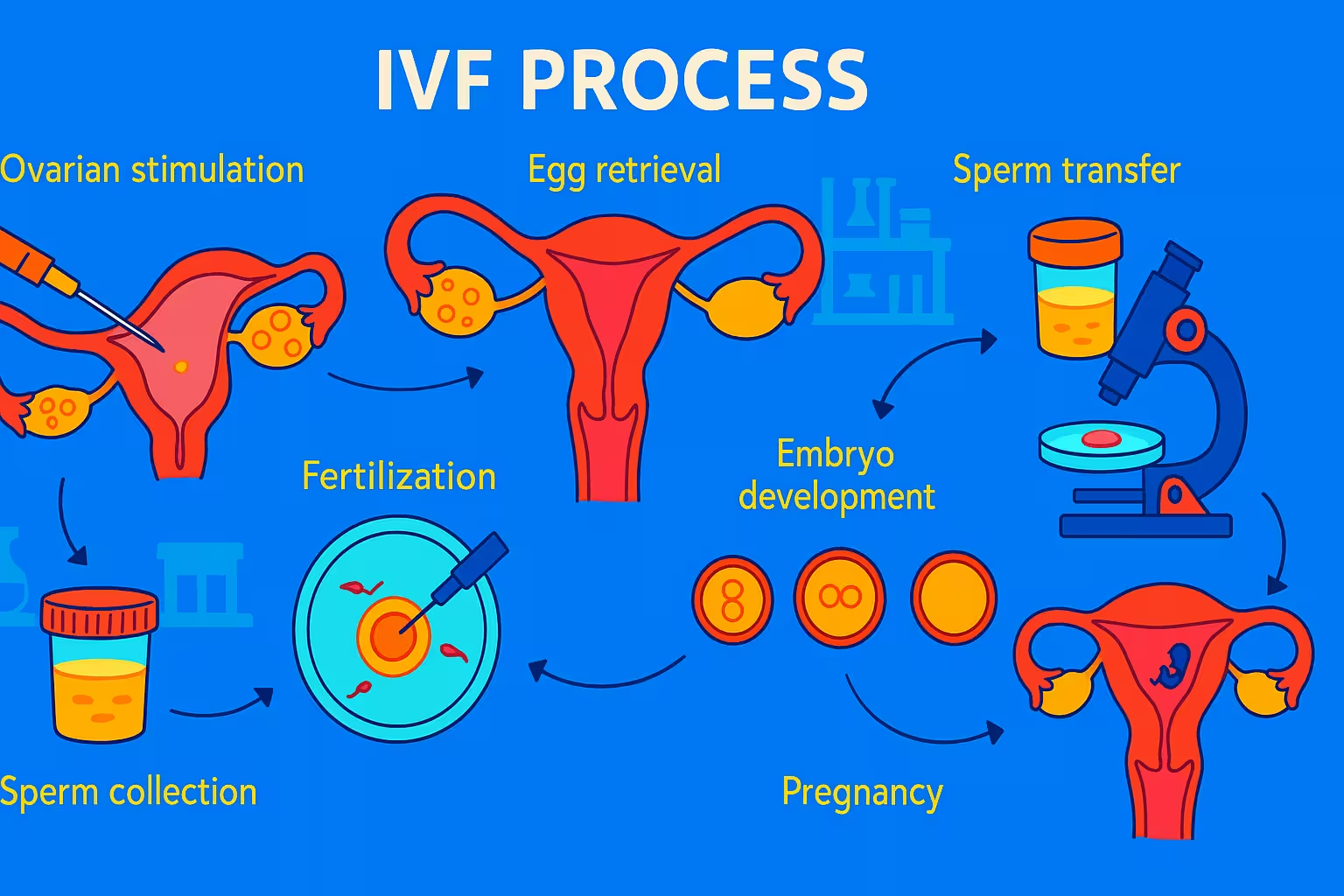Physical Address
304 North Cardinal St.
Dorchester Center, MA 02124
Physical Address
304 North Cardinal St.
Dorchester Center, MA 02124

In recent years, IVF pregnancy has become a beacon of hope for millions of couples struggling with infertility. If you’re new to the concept and are looking for a clear, beginner-friendly explanation of what IVF is, how it works, and what to expect from it, you’re in the right place.
This comprehensive guide covers every important aspect of IVF in a simple, practical manner. From understanding the IVF process step-by-step to exploring its success rates, safety, costs in India and globally, and the emotional journey it entails—we’ve got it all covered.
IVF stands for In Vitro Fertilization, a medical procedure that helps individuals and couples conceive a child when natural conception is not possible or has proven unsuccessful. The term “in vitro” means “in glass,” referring to the laboratory setting where fertilization occurs.
In simple terms, IVF involves combining a woman’s egg and a man’s sperm outside the body in a lab. Once fertilization occurs, the resulting embryo is implanted into the woman’s uterus, where it can develop into a healthy pregnancy.
IVF can be recommended for a variety of fertility-related issues. Common conditions include:
Read Also: Healthy Diet During Pregnancy: First Trimester Nutrition Guide
Understanding the IVF process step-by-step helps in setting the right expectations.
1. Initial Consultation and Testing
2. Ovarian Stimulation
3. Egg Retrieval (Ovum Pick-Up)
4. Sperm Collection
5. Fertilization
6. Embryo Culture
7. Embryo Transfer
8. Luteal Phase Support
9. Pregnancy Test
The IVF success rate depends on several factors, including age, cause of infertility, and clinic expertise. General success rates are:
These are average success rates per IVF cycle. Often, more than one cycle is needed.
On average, many women require 2 to 3 IVF cycles to achieve a successful pregnancy. However, this number can vary based on age, fertility health, and how well the body responds to treatment.
IVF is generally considered safe, but like any medical procedure, it comes with certain risks:
Common Risks:
Rare Complications:
Medical supervision, proper clinic protocols, and early detection significantly reduce these risks.
Cost of IVF in India:
Cost of IVF Globally (Average):
Costs can increase based on add-ons like ICSI, genetic testing, and donor sperm or eggs.
Physical Side Effects:
Emotional Challenges:
Many couples benefit from joining support groups or seeking counseling during the process.
Because more than one embryo is sometimes transferred to improve success rates, IVF increases the chance of twins or triplets.
Key Points:
Myth 1: IVF always results in twins.
Myth 2: IVF is 100% guaranteed.
Myth 3: IVF babies are not normal.
Myth 4: Only wealthy people can afford IVF.
IVF pregnancy offers a powerful solution for couples facing fertility challenges. While it involves a complex medical journey, with the right guidance and emotional support, many individuals have successfully built families through IVF.
If you’re considering IVF, consult with a trusted fertility specialist, understand the process, weigh the costs and success rates, and prepare yourself emotionally and physically.